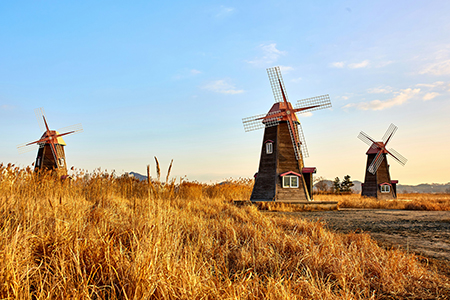Using High Interest Books to Teach Environmental Science Concepts
By Jill Lytle, Santa Ana Unified School District
At a recent meeting of CASE’s Environmental Literacy Committee, we were discussing the power of using engaging reading books as a way to introduce, explore, and teach environmental literacy. We discussed several books that we have successfully used in the past, or heard of others using successfully to do just that, and I mentioned that I really love using the book The Boy Who Harnessed the Wind, by William Kamkwamba as a summer assignment for my Advanced Placement (AP) Environmental Science class.
I have been teaching the class since 2010, and have assigned summer homework every year. Early on, having students read the book and answer questions about it as they read became one of my favorite assignments. The year I was not able to assign it because of the pandemic, I was frustrated to have lost such an amazing teaching tool.

The book is a true story about William Kamkwamba’s life in Malawi. Part of the reason I like it is that it reads more like a novel than a nonfiction book, and tends to hold the students’ attention. The story revolves around William’s life as he leaves primary school, and his parents do not have the money to pay for secondary school. Because of the lack of funds, William is not allowed to attend school any longer, and repeatedly gets kicked out after a grace period at the start of each term. He wants to learn, and ends up spending as much time as possible in the small local library. In the library, he finds a book that describes how to generate electricity with a windmill, and becomes obsessed with the possibility of creating a windmill to bring reliable electricity to his family and community.
The book is a powerful discussion starter for so many issues relevant to an environmental science class.
Obviously, it brings in discussions about energy generation, fuel sources, resource accessibility, and infrastructure, but there are a number of additional topics that relate directly to most environmental science curriculums. From the beginning of the book, there is extensive discussion about small scale agriculture, drought, and famine. There is great information about the messy politics and economics of famine relief on such a large scale. There is even information about how communities can be affected by epidemic diseases that are spread through insufficient infrastructure, such as cholera. All of these topics are also presented in such a way that it allows for, and even highlights the fact that environmental decisions are often not solely based on what science tells us, but by economic, political, and sociological factors as well. As an added bonus, because the story takes place in an African nation, it introduces a culture and lifestyle very different from what my students are used to, growing up in Orange County, California.
I enjoyed reading the book myself, and a large proportion of my students have told me they enjoyed it as well. I refer back to the book throughout the school year, and use it as a way to not only introduce individual concepts, but also discuss how intertwined all of our curriculum is, and how complicated the world is, with every piece attached to numerous others.
As an Advanced Placement teacher, I obviously want a book that will keep my students with solid reading skills engaged, and I like to think the original version of this book does that. But I am well aware that not every teacher teaches Advanced Placement juniors and seniors, and thankfully this book can be truly accessible to students at any level, because the publishers have also created a young readers’ edition, as well as a picture book. There are numerous reading guides, and reading comprehension assignments that can be found online to help students understand what they are reading, and to hold them accountable. It would also be an excellent selection for a book club within your class, or between several classes.
You should be aware there is a movie based on the book available on Netflix. The movie is genuinely well done, but like any two hour movie, it does not touch on every aspect of the 320 page book, which should allow you to hold students accountable for completing the reading instead of just watching the movie instead.
I love the idea of having another way for students to access the curriculum, and hopefully hook them into what my class has to offer early in the school year.
The Environmental Literacy Committee hopes to bring you more classroom (or personal!) reading suggestions over the coming months. We hope these texts will be useful in your classrooms to help address environmental concepts with students of every age and ability level.
About the Author
Jill Lytle is a high school science teacher of biology, environmental science, and AP Environmental Science at Godinez Fundamental High School in Santa Ana Unified School District, and a member of CASE’s Environmental Literacy Committee.






